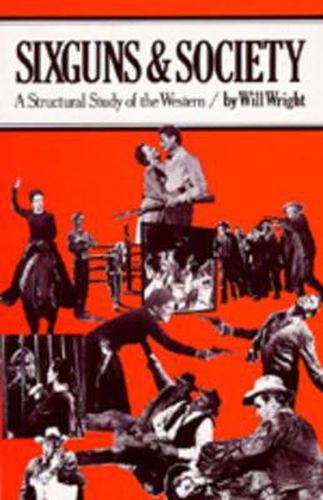Readings Newsletter
Become a Readings Member to make your shopping experience even easier.
Sign in or sign up for free!
You’re not far away from qualifying for FREE standard shipping within Australia
You’ve qualified for FREE standard shipping within Australia
The cart is loading…






From the Preface: The purpose of this book is to explain the Western’s popularity. While the Western itself may seem simple (it isn’t quite), an explanation of its popularity cannot be; for the Western, like any myth, stands between individual human consciousness and society. If a myth is popular, it must somehow appeal to or reinforce the individuals who view it by communicating a symbolic meaning to them. This meaning must, in turn, reflect the particular social institutions and attitudes that have created and continue to nourish the myth. Thus, a myth must tell its viewers about themselves and their society. This study, which takes up the question of the Western as an American myth, will lead us into abstract structural theory as well as economic and political history. Mostly, however, it will take us into the movies, the spectacular and not-so-spectacular sagebrush of the cinema. Unlike most works of social science, the data on which my analysis is based is available to all of my readers, either at the local theater or, more likely, on the late, late show. I hope you will take the opportunity, whenever it is offered, to check my findings and test my interpretations; the effort is small and the rewards are many. And if your wife, husband, mother, or child asks you why you are wasting your time staring at Westerns on TV in the middle of the night, tell them firmly-as I often did-that you are doing research in social science.
$9.00 standard shipping within Australia
FREE standard shipping within Australia for orders over $100.00
Express & International shipping calculated at checkout
From the Preface: The purpose of this book is to explain the Western’s popularity. While the Western itself may seem simple (it isn’t quite), an explanation of its popularity cannot be; for the Western, like any myth, stands between individual human consciousness and society. If a myth is popular, it must somehow appeal to or reinforce the individuals who view it by communicating a symbolic meaning to them. This meaning must, in turn, reflect the particular social institutions and attitudes that have created and continue to nourish the myth. Thus, a myth must tell its viewers about themselves and their society. This study, which takes up the question of the Western as an American myth, will lead us into abstract structural theory as well as economic and political history. Mostly, however, it will take us into the movies, the spectacular and not-so-spectacular sagebrush of the cinema. Unlike most works of social science, the data on which my analysis is based is available to all of my readers, either at the local theater or, more likely, on the late, late show. I hope you will take the opportunity, whenever it is offered, to check my findings and test my interpretations; the effort is small and the rewards are many. And if your wife, husband, mother, or child asks you why you are wasting your time staring at Westerns on TV in the middle of the night, tell them firmly-as I often did-that you are doing research in social science.